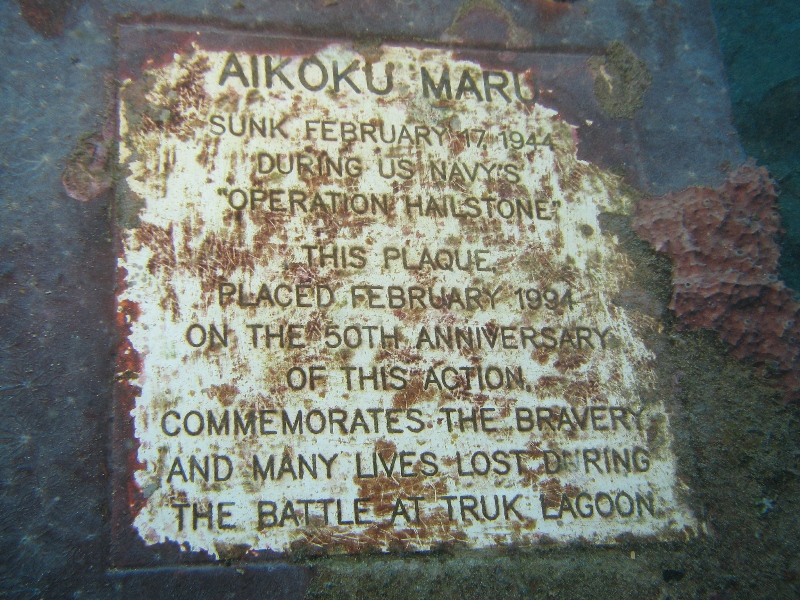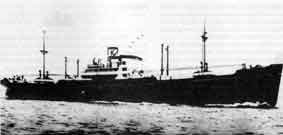
Aikoku Maru
Aikoku Maru was launched in 1940. The Aikoku Maru was
requestioned by the Japanese Navy on September 1, 1941. On 6 September, the
Aikoku Maru and Hokoku Maru were chosen to form the "24 Sentai", which would
translate to "Auxiliary (or Converted) Cruiser Squadron 24", and assigned to the
Combined Fleet.
Sunk on the first day of Operation Hailstorm (at N7 22.387 E151 54.730), to the
east of Dublon Island. The depth is approx 85 feet (25 meters) to the very top
of the funnel.

Auxiliary Cruiser (XCL) Aikoku Maru with it's camouflaged colours at anchor in Singapore in 1942.

What's left of her now.

A plaque, self explanatory really.
My dive buddy Shane making his way out of a blast hole in the side of the ship.
Fujikawa Maru
6,398 tons when built in 1938, the Fujikawa
Maru was built as a passenger and cargo carrier. She was converted for military
action in 1940 to ferry armed aircraft and was fitted with 6" bow and stern
guns. She was used all over the Pacific to deliver planes and aircraft parts to
island parts through the Indo-China region.
Now lying on an even keel to 34 meters (at N7 20.690 E151 53.091), Fujikawa Maru
was sunk on the 17th of Feb 1944, on the first day of Operation Hailstorm.
One of the features is the impressive bow gun, which is slightly raised and
pointing a slightly to starboard.
However, the most interesting things are to be found in hold number 2; aircraft
fuselage pieces, cockpits and wings and other assorted Zero fighter bits. There
are also torpedoes, propellers, cables, papers, plates and assorted debris
scattered all around.


Fujikawa Maru (centre) undamaged on the first day. Tonan Maru No.3 on fire (white smoke) in the background.
Was this mask ever used?
We also did a night dive on this vessel, but I did not take my camera for it.
Back to the Dives page.